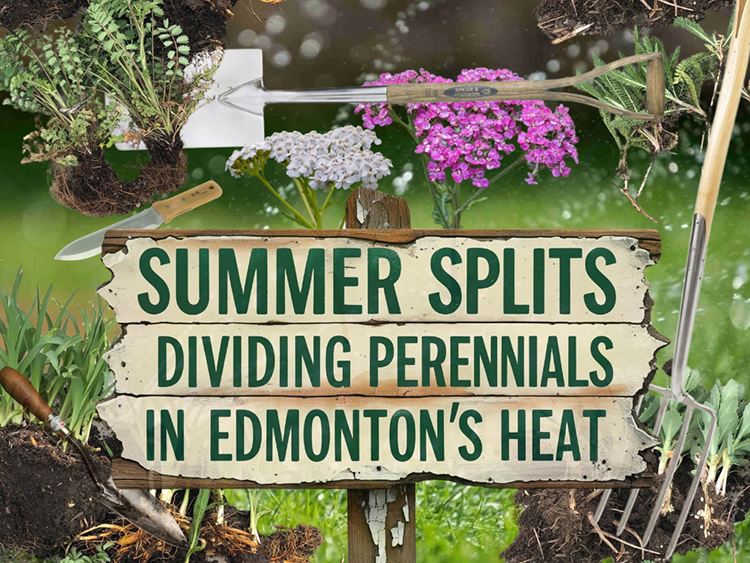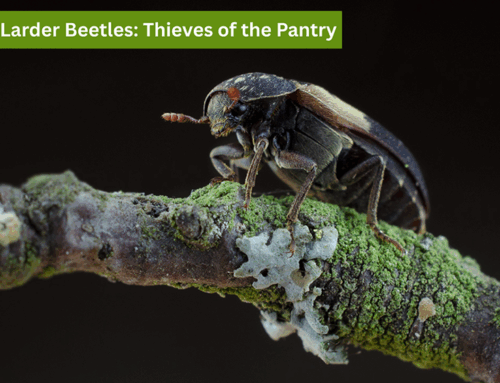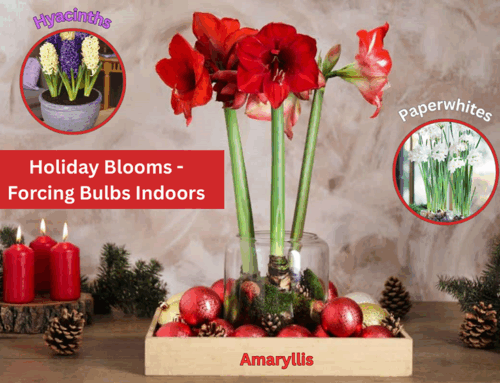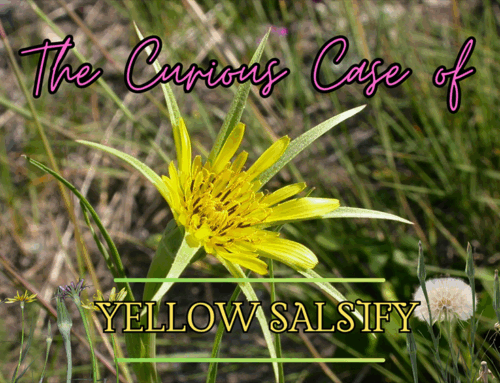Summer Splits: Dividing Perennials in Edmonton’s Heat
by Brett Kerley
It might be hot, your garden buzzing with bees and bursting with blooms, but believe it or not, summer can be a smart time for dividing perennials. While spring and fall are the traditional seasons for this garden task, summer’s not off-limits—especially if you’re working with the right plants and a little preparation.
So whether you’ve been putting it off, find yourself moving mid-season, or simply want to multiply your favourite plants, you’re in luck. Many perennials thrive with a well-timed summer split—even in our Zone 3–4 climate.
Why Divide in Summer?
While the warmth and long daylight hours might seem like a stressful time for root work, summer division can be successful with the right care. In fact, some plants—like bearded iris and Oriental poppy—prefer being divided during this hot window. Plus, dividing can reinvigorate aging plants showing signs of decline, such as:
- Fewer or smaller flowers
- A dead or thinning center
- Shrinking or overcrowded clumps
How to Divide Perennials in Summer (Without the Stress)
- Water Well, the Day Before: Give both the plant and its new home a thorough soak the day before you dig. This helps reduce transplant shock.
- Cut Back Foliage: With heat and sun bearing down, trimming is essential. It helps the root system cope with less stress.
- Daylilies, catmint, lamb’s ear: Shear back to a few inches above the soil.
- Coral bells, pulmonaria, columbine: Snip individual leaves in half.
- Dig and Divide: Use a sharp spade to dig about 4–6 inches out from the plant’s crown. Different root types need different methods: clumps can be teased apart or sliced, while rhizomes are often best pulled or cut.
- Replant Promptly: Don’t let roots dry out. Get divisions into their new spots quickly, fill the hole halfway, and water deeply.
- Fertilize Gently: A diluted organic liquid fertilizer (like fish or seaweed emulsion) gives your plants a boost without burning tender roots.
- Finish the Job: Backfill the hole and water again. Think of it as tucking your plant into its new bed.
- Mulch and Shade A 1–2 inch layer of mulch helps retain moisture. For full-sun plants, rig up a temporary shade shelter—bamboo stakes and landscape fabric work wonders.
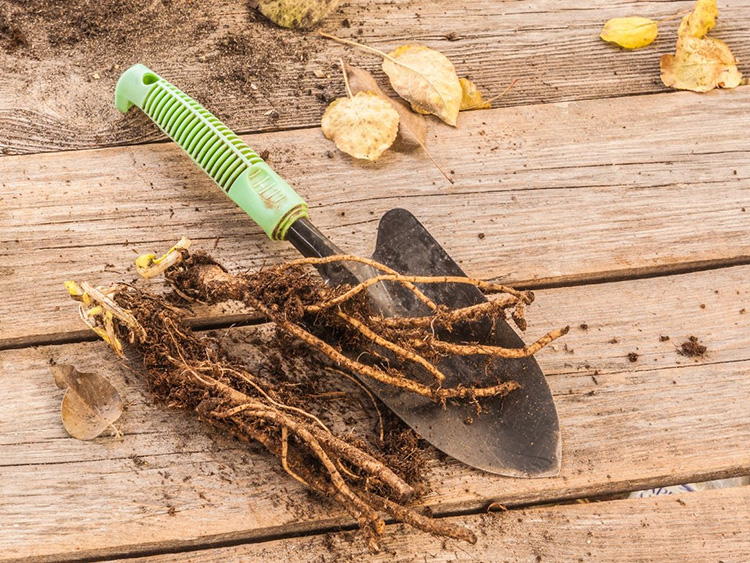
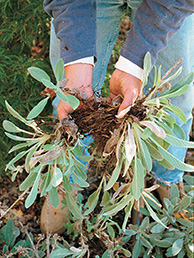
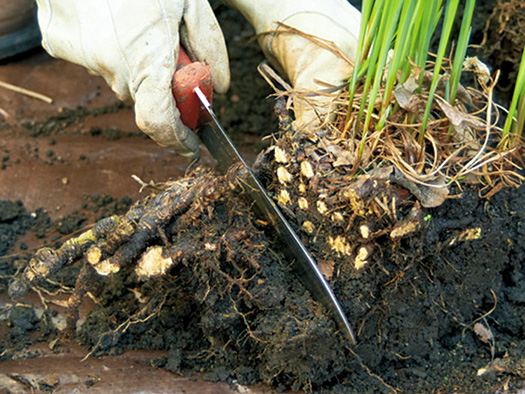
Water Wisdom
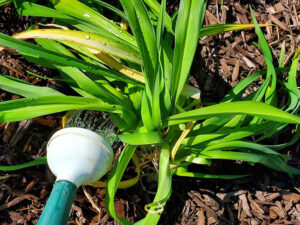 Summer-divided plants are thirstier than usual. Check them daily, and water whenever you see wilting in the morning or evening. New divisions often need a drink every day for the first week or two.
Summer-divided plants are thirstier than usual. Check them daily, and water whenever you see wilting in the morning or evening. New divisions often need a drink every day for the first week or two.
Which Plants to Divide in Summer?
Here are some hardy perennials that don’t mind being split during Edmonton’s warm season. All are Zone 3 or 4 survivors—perfect for our prairie climate.
| Plant | Botanical Name | Notes |
|---|---|---|
| Bearded iris | Iris hybrids | Divide every 3–4 years in midsummer. Cut leaves back to 4–5 inches. |
| Bellflower (Clustered & Spotted | Campanula glomerata/punctata | Divide after first bloom. Provide new divisions with shade. |
| Bergenia | Bergenia cordifolia | Divide every 4–5 years. Cut leaves back by half. |
| Bugleweed | Ajuga reptans | Clip and transplant rooted runners. No need to dig up the whole plant. |
| Catmint | Nepeta x faassenii | Tidy up by halving the foliage. Doesn’t need frequent division. |
| Columbine | Aquilegia spp. | Divide to keep hybrid colours. Cut back leaves. |
| Coral Bells | Heurchera hybrids | Root from crown pieces. No roots needed on every bit. |
| Coreopsis | Coreopsis grandiflora | Extend this short-lived perennial’s life with regular division. |
| Daylily | Hemerocallis spp. | Every 5–7 years is best. Spring is better for rebloomers. |
| Dianthus | Dianthus spp. | Just snip off and replant rooted edge pieces. |
| Fernleaf bleeding heart | Dicentra eximia | May go dormant post-division, but it will return. |
| Garden Phlox | Phlox paniculata | Discard woody centers, replant outer edges. |
| Lamb’s ears | Stachys byzantina | Don’t overwater! These guys are tough and woolly. |
| Maltese Cross | Lychnis chalcedonica | Divide after flowering. May lose second bloom. |
| Oriental poppy | Papaver orientale | Mark their spots—foliage vanishes quickly post-bloom. |
| Peony | Paeonia spp | New plants may take years to flower. Replant at the same depth. |
| Pulmonaria | Pulmonaria hybrids | Big leaves wilt easily—trim them down! |
| Snowdrop anemone | Anemone sylvestris | Divide by rhizomes with one bud each. |
| Speedwell | Veronica hybrids | Easy to split; make sure to grab plenty of roots. |
| Yarrow | Achillea spp. | Divide every 2–3 years to prevent overcrowding. |
What To Do With Your Divided Plants?
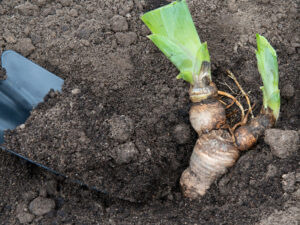 Now that you’ve got a wheelbarrow full of healthy divisions, here are a few fun and practical ways to make the most of them:
Now that you’ve got a wheelbarrow full of healthy divisions, here are a few fun and practical ways to make the most of them:
Fill In Gaps in Your Garden
Tired of bare soil or empty patches? Your new divisions can fill those spaces for a more lush and cohesive garden design.
Create a New Bed or Border
Use your divisions to start a brand-new planting area—whether it’s a pollinator patch, a shady retreat, or a sunny slope.
Share with Friends or Neighbours
Pass along divisions to fellow gardeners, community gardens, or local schools. A well-rooted clump of iris or daylily makes a perfect garden gift.
Pot Up for a Future Plant Sale
If you’re part of a garden club, consider potting divisions up and nurturing them for a future fundraiser.
Trade for Variety
Organize a swap—many gardeners are happy to exchange divisions and expand their plant palette. Did you know that the Edmonton Horticultural Society has two swaps per year – one in the spring and one in the fall – Visit EHS Perennial Exchange for more information
Final Thoughts: Hot But Not Bothered
Don’t let the thermometer scare you away from tackling this chore. With a little foresight—and maybe a hat and a cold lemonade—summer division can be just what your garden needs to thrive through Edmonton’s seasons. Divide and conquer, gardener!
Split smart, plant proud, and keep growing!

